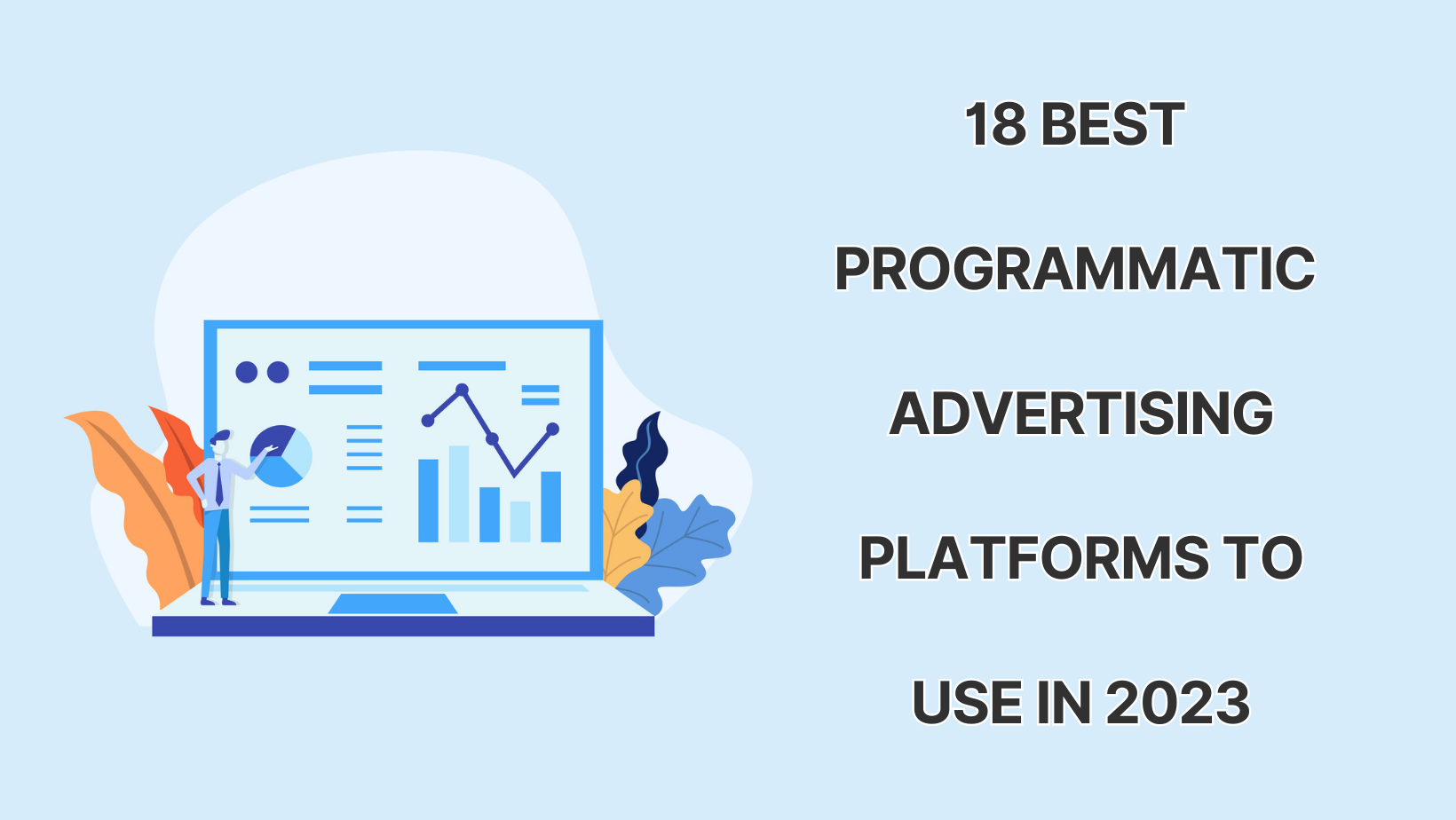
![]()
Programmatic display advertising has revolutionized the way businesses approach digital advertising. By using sophisticated algorithms and real-time bidding, programmatic advertising platforms allow businesses to reach their target audience with precision, scale, and efficiency. However, with so many programmatic display advertising platforms available in the market, it can be overwhelming for businesses to choose the right one for their needs.
This article will explore 19 programmatic display advertising platforms businesses should consider for their next advertising campaign. Each platform offers unique features and advantages to help companies achieve their advertising goals, whether brand awareness, lead generation, or sales conversion. From well-established players like Google Ads and Facebook Ads to up-and-coming platforms like Choozle and Simpli.fi, we have compiled a list of platforms that suit different budgets, industries, and advertising objectives. So, let’s dive in and discover the best programmatic display advertising platforms for your business!
What Are Programmatic Advertising Platforms?
Programmatic advertising platforms are automated systems that streamline the buying and selling of digital ad inventory. These platforms use complex algorithms and machine learning to analyze vast amounts of data to make real-time purchasing decisions. By leveraging data on user demographics, behavior, and preferences, programmatic advertising platforms enable advertisers to target the right audience with the right message, at the right time and place. These platforms provide advertisers with a wide range of ad formats and inventory options, including display, video, mobile, and social media.
Programmatic advertising platforms offer several advantages, including increased efficiency, better targeting capabilities, and improved campaign performance. They allow for precise audience segmentation, maximizing the chances of reaching the most relevant users. With the ability to automate ad buying and optimize campaigns, programmatic advertising platforms have revolutionized the way digital advertising is executed, enabling advertisers to achieve higher ROI and more effective ad placements.
How Does Programmatic Advertising Work?
Programmatic advertising works through the use of advanced technology and automated processes to buy and sell digital ad inventory. The process begins with an advertiser setting up their campaign parameters, such as target audience, budget, and ad creatives. Then, the advertiser connects to a programmatic advertising platform or a demand-side platform (DSP). The DSP uses sophisticated algorithms and machine learning to analyze a vast amount of data in real-time, including user behavior, preferences, and intent signals. Based on this data, the DSP determines the optimal bid price and which ad impressions to purchase.
This bidding process happens within milliseconds as an ad impression becomes available on a publisher’s website or app. When the winning bid is determined, the advertiser’s ad is instantly displayed to the user. Programmatic advertising platforms enable advertisers to reach their target audience on multiple devices and across various websites and apps, providing them with granular control, transparency, and the ability to optimize campaigns in real-time.
Overall, programmatic advertising allows for more efficient and effective ad buying, making it a powerful tool for digital marketers.
Benefits of Using Programmatic Advertising Platforms
Efficiency: Programmatic advertising automates the ad buying and selling process, saving time and resources compared to traditional methods.
Cost-effectiveness: Real-time bidding and optimization algorithms ensure that advertisers only pay for impressions that are valuable to their campaign goals, reducing wasted ad spend.
Targeting capabilities: Programmatic platforms leverage advanced data analysis and targeting parameters to reach specific audience segments, increasing the likelihood of conversions.
Personalization: By leveraging data insights, programmatic advertising allows advertisers to deliver highly personalized and relevant ads to specific users, leading to improved engagement and response rates.
Transparency: Programmatic platforms provide advertisers with access to detailed reporting and analytics, allowing them to track ad performance, measure return on investment, and make data-driven optimizations.
Real-time optimizations: Programmatic advertising platforms enable advertisers to make adjustments to ad campaigns in real-time, ensuring that ads remain effective and aligned with campaign objectives.
Cross-channel advertising: Programmatic platforms facilitate seamless integration across multiple devices and channels, including desktop, mobile, and connected TV, ensuring consistent brand messaging and visibility.
Enhanced reach and scale: Programmatic platforms have access to a vast number of publishers, allowing advertisers to reach a wider audience and maximize their campaign’s reach.
A/B testing: Programmatic advertising platforms enable advertisers to run A/B tests, allowing them to compare ad creatives, messaging, and targeting strategies to determine the most effective approach.
Flexibility and control: Programmatic platforms provide advertisers with the flexibility to adjust their campaign settings, targeting parameters, and budgets, putting them in full control of their advertising efforts.
Overall, using programmatic advertising platforms offers numerous benefits, including increased efficiency, cost-effectiveness, advanced targeting capabilities, personalization, transparency, real-time optimizations, cross-channel advertising, enhanced reach and scale, A/B testing capabilities, and flexibility and control.
The Challenges of Programmatic Advertising
Ad Fraud: Programmatic advertising is susceptible to various forms of ad fraud, including bot traffic, non-human views, and click fraud. Advertisers need to implement robust fraud detection measures to protect their ad spend.
Brand Safety: Advertisers may struggle with ensuring that their ads are displayed in safe and appropriate environments. Programmatic platforms must continually monitor and blacklist websites that may have controversial or inappropriate content.
Ad Viewability: Programmatic advertising does not guarantee that ads will be viewed by users. Advertisers need to optimize their campaigns to improve ad viewability and ensure their messages are reaching the intended audience.
Data Quality: Programmatic advertising relies heavily on data. However, the accuracy and quality of data can vary, which may impact targeting, ad delivery, and campaign performance. Ensuring data accuracy and reliability is crucial.
Attribution: Determining the true impact of programmatic advertising on conversions and sales can be challenging due to the complex customer journey. Attribution models need to be carefully selected and implemented to accurately measure campaign effectiveness.
Ad Blocking: The rise in ad-blocking software presents a challenge for programmatic advertising. Advertisers need to create engaging and relevant ad experiences that users choose not to block.
Transparency: The lack of transparency in programmatic advertising can be a challenge for advertisers. Understanding the fees, margins, and the supply chain involved in programmatic transactions can be complex and difficult to navigate.
Ad Overload: Programmatic advertising can lead to a saturation of ads, resulting in ad fatigue among users. Advertisers need to be mindful of the frequency and relevance of their ads to prevent user annoyance and disengagement.
Ad Placement Control: While programmatic advertising offers targeting capabilities, there can still be instances where ads are displayed next to irrelevant or controversial content. Advertisers need to have control over ad placement and brand safety settings to mitigate these risks.
Complexity: Programmatic advertising can be complex and requires a deep understanding of the underlying technology and ecosystem. Advertisers may face challenges in navigating the various ad exchanges, demand-side platforms, and supply-side platforms.
It’s important for advertisers to be aware of these challenges and implement strategies to address them to ensure the success of their programmatic advertising campaigns.
Difference Between Sell-Side vs. Buy-Side Programmatic Platforms
Sell-Side Programmatic Platforms:
1. Purpose: Sell-side platforms (SSPs) are designed for publishers and media companies to manage and sell their ad inventory to advertisers.
2. Inventory Management: SSPs enable publishers to manage their ad inventory, including setting pricing rules, ad formats, and targeting options.
3. Demand Sources: SSPs provide access to multiple demand-side platforms (DSPs) and ad exchanges, allowing publishers to connect with a wide range of advertisers.
4. Optimization: SSPs use algorithms and real-time bidding to optimize ad impressions and maximize revenue for publishers.
5. Yield Management: SSPs offer yield management tools to help publishers optimize the value of their ad inventory by dynamically adjusting ad pricing based on market demand.
6. Reporting and Analytics: SSPs provide publishers with detailed reporting and analytics to monitor ad performance, revenue, and audience insights.
7. Brand Safety and Verification: SSPs typically offer brand safety and verification features to ensure that ads are displayed in a safe and reputable environment.
8. Monetization Options: SSPs offer various monetization options for publishers, including direct sales, private marketplace deals, programmatic guaranteed, and open auction.
Buy-Side Programmatic Platforms:
1. Purpose: Buy-side platforms (DSPs) are designed for advertisers and agencies to manage and purchase ad inventory across multiple publishers and ad exchanges.
2. Campaign Management: DSPs allow advertisers to create, manage, and optimize their programmatic ad campaigns, including budget allocation, targeting options, and creative variations.
3. Targeting Capabilities: DSPs provide advanced targeting options to reach specific audiences, including demographic, behavioral, contextual, and geographical targeting.
4. Real-Time Bidding: DSPs use real-time bidding to access ad inventory and bid on impressions in real-time based on targeting criteria and campaign objectives.
5. Data Integration: DSPs enable advertisers to utilize their own first-party data or leverage third-party data providers to enhance audience targeting and campaign effectiveness.
6. Performance Optimization: DSPs use algorithms and machine learning to optimize campaigns, including adjusting bidding strategies, targeting parameters, and creative rotations to maximize performance.
7. Reporting and Analytics: DSPs provide advertisers with detailed reporting and analytics to track campaign performance, measure return on investment, and make data-driven optimizations.
8. Cross-Channel Advertising: DSPs offer the ability to manage programmatic ad campaigns across various channels, including display, mobile, video, social, and connected TV.
In summary, sell-side programmatic platforms (SSPs) serve publishers and help them monetize their ad inventory, while buy-side programmatic platforms (DSPs) serve advertisers and facilitate the purchase of targeted ad impressions across
18 Programmatic Display DSP Advertising Platforms
1. Google Ads
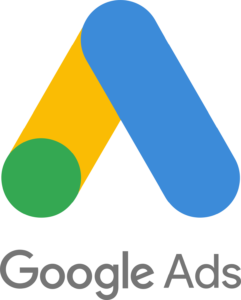
![]() Google Ads is one of the market’s most well-known programmatic advertising platforms, offering businesses a suite of services to optimize their advertising campaigns. Google Ads programmatic services provide companies with access to Google’s vast network of publishers and ad exchanges, allowing them to reach their target audience across multiple devices and channels.
Google Ads is one of the market’s most well-known programmatic advertising platforms, offering businesses a suite of services to optimize their advertising campaigns. Google Ads programmatic services provide companies with access to Google’s vast network of publishers and ad exchanges, allowing them to reach their target audience across multiple devices and channels.
One of the key benefits of Google Ads programmatic services is its use of machine learning algorithms to optimize ad delivery and targeting. With Google’s advanced algorithms, businesses can leverage data-driven insights to target the right audience at the right time and message. Google Ads also provides businesses with various ad formats, including display ads, video ads, and native ads, to reach their audience most engagingly and effectively as possible.
In addition, Google Ads programmatic services provide businesses with real-time reporting and analytics, allowing them to track the performance of their advertising campaigns and make informed decisions based on the data. This level of transparency and control ensures businesses can optimize their advertising budget for better ROI.
Overall, Google Ads offers businesses a comprehensive solution to their advertising needs. By leveraging Google’s vast network, advanced algorithms, and data-driven insights, companies can reach their target audience and achieve their advertising goals precisely and efficiently.
2. META/Facebook Ads
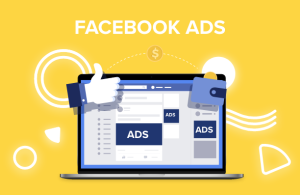
Facebook Ads is another popular programmatic advertising platform. With Facebook Ads, businesses can create and manage their ads on the Facebook platform, as well as on Instagram and other third-party websites and apps.
Another popular programmatic ad platform is Facebook Ads, which provides companies with an array of services to enhance their advertising campaigns. With Facebook Ads programmatic services, a marketer can gain access to Facebook’s massive user base. In addition, Facebook, also known as Meta Platforms, Inc., can serve ads on social media platforms such as Instagram, Meta Quest, Oculus, and more.
One of the primary benefits of Facebook Ads programmatic services is their strong targeting capabilities. Using Facebook’s advanced targeting options, businesses can target their ads to specific audiences based on demographics, interests, behaviors, and other factors. Allowing businesses to present highly relevant and personalized ads to their target audience increases the likelihood of engagement and conversion.
The platform also presents a variety of ad formats to businesses, including image ads, video ads, carousel ads, and more. Companies can use these ad formats to showcase their products or services most engagingly and effectively.
Facebook Ads can give businesses a powerful tool for reaching their target audience on the world’s largest social media platform. Companies can accomplish their advertising objectives thanks to Facebook’s sophisticated targeting options, compelling ad formats, and real-time reporting.
3. LinkedIn Ads
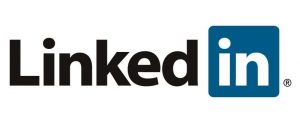
LinkedIn Ads is the leading best programmatic ad platform enabling businesses to reach and engage their target audience precisely. With over 722 million members worldwide, LinkedIn offers an unparalleled opportunity for advertisers to connect with professionals and decision-makers in various industries.
LinkedIn Ads stands out for its exceptional targeting capabilities. Advertisers can leverage a variety of criteria, such as job title, industry, company size, and location, to target specific users. This level of precision enables businesses to create highly relevant and personalized ads, which can increase the likelihood of conversion.
Furthermore, LinkedIn Ads offers various ad formats, including sponsored content, sponsored messaging, and display ads. Each format presents unique advantages and can be customized to suit a business’s requirements. With such diversity in ad formats, LinkedIn Ads can accommodate various campaign objectives, whether building brand awareness, generating leads, or driving website traffic.
Another benefit of LinkedIn Ads is its ability to measure and optimize campaign performance. The platform provides advertisers with detailed analytics and insights, such as click-through rates, impressions, and engagement rates, which can help them refine their targeting and messaging to improve campaign results.
LinkedIn Ads also offers a range of budget options, from cost-per-click (CPC) to cost-per-impression (CPM) and cost-per-send (CPS). This flexibility allows advertisers to choose the budget that suits their needs and monitor campaign spending closely.
In summary, LinkedIn Ads is a highly effective programmatic advertising platform that offers advanced targeting capabilities, a range of ad formats, detailed analytics, and flexible budget options. With its large and highly engaged user base, LinkedIn Ads is a top choice for businesses looking to connect with professionals and decision-makers in various industries.
4. Amazon Advertising
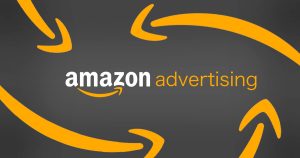
Amazon Advertising is a programmatic advertising platform that offers a range of benefits to advertisers. One of the key benefits of Amazon Advertising is its massive audience. With over 310 million active customer accounts worldwide, Amazon offers advertisers a broad reach to potential customers.
Amazon Advertising offers sophisticated targeting options that use Amazon’s enormous consumer data set to assist advertisers in reaching their target market. Advertisers can use the platform to target consumers based on various factors, including search queries, past purchases, and browsing habits. Thanks to this level of accuracy, as a result, advertisers may produce highly relevant, tailored ads that appeal to their target market.
Additionally, various ad formats are available through Amazon Advertising, such as sponsored items, brands, and display ads. Each model has particular advantages and can be tailored to a business’s needs.
One of the most significant advantages of Amazon Advertising is its ability to drive sales. With the platform’s product-focused ad formats, advertisers can promote their products to users actively searching for similar items on Amazon. This strategy can increase the likelihood of conversion and drive sales for businesses.
Lastly, Amazon Advertising provides robust analytics and reporting tools that allow advertisers to track campaign performance and optimize their ads for better results. This data-driven approach can help businesses refine their targeting and messaging to improve campaign outcomes and increase ROI.
5. AdRoll
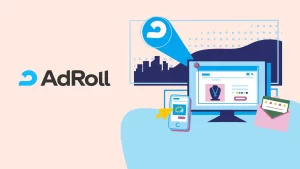
AdRoll is a programmatic advertising platform that allows businesses to create and manage their ads across multiple channels, including web, mobile, and social.
Next, we have, AdRoll. AdRoll is an award-winning programmatic advertising platform that provides a range of services to help businesses connect with their desired audiences.
Firstly, a key benefit of AdRoll’s programmatic services is its cross-device targeting capabilities. With consumers increasingly accessing the internet on multiple devices, AdRoll’s platform allows advertisers to target users across devices and platforms, delivering a seamless user experience.
Secondly, AdRoll offers a range of ad formats, including display ads, social ads, and native ads, allowing advertisers to choose the format that best fits their campaign objectives.
Thirdly, one of the most significant benefits of AdRoll’s programmatic services is its focus on data and analytics. AdRoll provides robust reporting and analytics tools that enable businesses to track campaign performance and optimize their ads for better results. This data-driven approach can help companies to refine their targeting and messaging to improve campaign outcomes and increase ROI.
Finally, AdRoll offers excellent customer support, with dedicated account managers and support teams working with businesses to ensure their campaigns run effectively and efficiently. This personalized support can help enterprises to achieve their advertising goals and drive success.
6. The Trade Desk

The Trade Desk is a programmatic advertising platform that provides a range of services to help businesses reach their target audience and achieve their advertising goals. Like any advertising platform, Trade Desk has its pros and cons.
One of the critical advantages of the Trade Desk is its wide range of inventory options. In addition, the platform provides access to over 500 billion digital impressions daily across multiple ad formats and devices, giving advertisers a vast reach to potential customers.
Another benefit of Trade Desk’s programmatic services is its advanced targeting capabilities. Advertisers can leverage a variety of criteria, including location, demographics, interests, and behavior, to target specific users with relevant and personalized ads.
Trade Desk also offers robust reporting and analytics tools that allow businesses to track campaign performance and optimize their ads for better results. This data-driven approach can help enterprises to refine their targeting and messaging to improve campaign outcomes and increase ROI.
On the downside, Trade Desk can be complex and require a steep learning curve, making it challenging for beginners. Additionally, the platform may not be cost-effective for small businesses with limited budgets due to its high minimum spend requirements.
Another potential downside of the Trade Desk is its lack of transparency. Some advertisers have raised concerns over the lack of visibility into ad placement and costs, making it challenging to optimize campaigns effectively.
In summary, Trade Desk’s programmatic services provide a range of benefits, including advanced targeting, comprehensive inventory options, and robust reporting and analytics tools. However, it may not be suitable for small businesses with limited budgets, and its complexity and lack of transparency may pose challenges for some advertisers.
7. Xandr
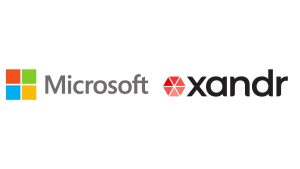
Xandr’s programmatic advertising services offer many advantages to advertisers, with one of the most notable being its advanced targeting capabilities. The platform leverages extensive consumer data to enable advertisers to target users based on a range of criteria, such as demographics, interests, and behavior. This level of precision targeting empowers advertisers to create highly personalized and engaging ads that effectively resonate with their intended audience.
Another benefit of Xandr’s programmatic services is its cross-device targeting capabilities. With consumers accessing the internet on multiple devices, Xandr’s platform allows advertisers to target users across devices and platforms, delivering a seamless user experience.
Xandr also offers robust reporting and analytics tools that enable businesses to track campaign performance and optimize their ads for better results. This data-driven approach can help companies to refine their targeting and messaging to improve campaign outcomes and increase ROI.
Overall, Xandr’s programmatic services provide a range of benefits to advertisers, including advanced targeting, cross-device targeting, and robust reporting and analytics tools, helping businesses reach their target audience and achieve their advertising goals.
8. DoubleClick
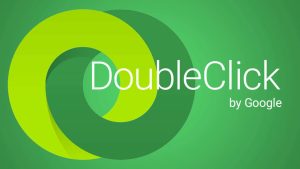
DoubleClick’s programmatic services offer a range of benefits to advertisers looking to reach their target audience and achieve their advertising goals. One of the key advantages of DoubleClick’s platform is its vast reach and access to premium inventory. Advertisers can access over 80 exchanges and over 700 premium publishers, extending their reach to potential customers.
Another benefit of DoubleClick’s programmatic services is its advanced targeting capabilities. Advertisers can leverage a range of criteria, including demographics, interests, behavior, and location, to target specific users with relevant and personalized ads. This level of targeting enables advertisers to create highly relevant and engaging ads that resonate with their target audience.
DoubleClick also offers robust reporting and analytics tools that enable businesses to track campaign performance and optimize their ads for better results. This data-driven approach can help companies to refine their targeting and messaging to improve campaign outcomes and increase ROI.
Overall, DoubleClick’s programmatic services provide a range of benefits to advertisers, including vast reach and access to premium inventory, advanced targeting capabilities, and robust reporting and analytics tools, helping businesses reach their target audience and achieve their advertising goals.
9. MediaMath
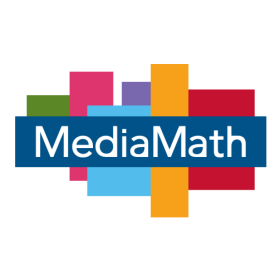
For advertisers wishing to connect with their target market and accomplish their advertising objectives, MediaMath’s programmatic offerings have several advantages. One of its primary benefits is the robust AI-powered algorithm that powers MediaMath’s platform, which can analyze enormous amounts of data and optimize ad distribution in real-time. As a result, there are higher engagement and conversion rates since ads are sent to the appropriate audience, at the proper time, and in the appropriate style.
The sophisticated targeting powers of MediaMath’s programmatic services are another advantage. Advertisers can target particular users with relevant and personalized adverts by using a variety of factors, such as demographics, interests, activity, and geography. As a result, advertisers may produce highly relevant and captivating advertising that connects with their target demographic thanks to this level of targeting.
MediaMath also provides a variety of ad formats, including display, video, mobile, and social ads. Each format can be adjusted to a company’s specific needs and optimized for optimum impact.
As a whole, MediaMath’s programmatic services offer plenty of advantages to advertisers, such as enhanced AI-powered optimization, customized targeting features, and various ad formats, assisting businesses in reaching their target demographic and meeting their advertising objectives.
10. Basis Technologies

Basis Technologies, formerly Centro, is a programmatic display advertising platform that allows marketers to reach their target audience at scale. It offers extensive features designed to maximize efficiency and optimize ad performance, including access to the latest targeting technology, real-time bidding capabilities, efficient campaign management tools, and more. With Basis Technologies, advertisers can access multiple ad exchanges, demand-side platforms, and data providers from a single dashboard, enabling them to optimize their campaigns for maximum ROI. In addition, the platform uses machine learning algorithms to automate bidding, targeting, and creative optimization, making it easy for advertisers to reach their target audience across multiple channels and devices.
Additionally, Basis Technologies makes it easier for advertisers to manage the complexities of digital advertising campaigns by taking away the manual effort involved in optimizing them. The platform’s powerful algorithms allow users to quickly identify the most effective strategies for achieving the desired objectives and outcomes. Moreover, it will enable users to customize campaigns based on the demographics and interests of their target audience. This will allow businesses to maximize the return on their advertising investments by ensuring they effectively reach their intended audiences.
Furthermore, Basis Technologies’ reporting capabilities provide detailed insights into campaign performance and allow advertisers to identify areas where improvements can be made easily. Its sophisticated yet intuitive dashboard lets users quickly access data-driven metrics such as ROI, CTR, and CPA. By leveraging these powerful insights, businesses can make informed decisions on optimizing their campaigns for maximum performance and profitability.
Basis Technologies is an invaluable tool for digital marketers and advertisers looking to streamline their display ad campaigns and increase ROI.
11. Choozle
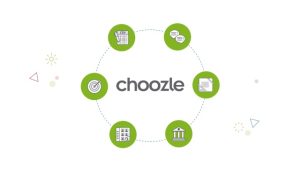
Choozle is a programmatic display advertising platform that enables users to create and manage campaigns, access relevant data and insights, and measure success. With its powerful real-time bidding technology, Choozle helps companies reach their target audience with maximum efficiency and effectiveness.
The benefits of using programmatic display advertising through Choozle are numerous. For starters, the automated process ensures that ads are only served to those likely to be interested in the advertised product or service. This increases engagement levels while decreasing cost per click (CPC). Additionally, allowing companies to define precise targeting criteria such as location, age range, interests, and more ensures that the right people see the right message at the right time. This increases the chance of conversion and helps to get maximum ROI.
Another advantage of programmatic display advertising is that it provides access to advanced analytics tools which give visibility into campaign performance and audience insights. With detailed reporting capabilities, for example, companies can track metrics such as CTR, CPM, CPC, reach, frequency, impressions, and more in real-time. With this data at hand, companies are better able to optimize campaigns for higher returns or adjust strategies accordingly based on results.
Programmatic display advertising through Choozle offers many advantages for companies looking to deliver more targeted and effective campaigns. With automated processes, precise targeting capabilities, detailed analytics tools, and a wide range of ad formats, programmatic display advertising enables companies to maximize ROI while ensuring efficient use of resources. However, careful management regarding data handling and budgeting is required to get the most out of these solutions.
12. Simpli.fi
![]()

Simpli.fi is an innovative programmatic display technology that offers unparalleled benefits for digital marketers. By leveraging its advanced targeting capabilities, advertisers can reach the right audiences at the right time, minimizing wasted ad impressions and maximizing ROI. Additionally, Simpli. fi’s vast data set allows advertisers to gain unprecedented insight into how their campaigns perform across different sites and devices in real-time. This makes analyzing performance data easier and deciding how best to adjust ad spending.
Moreover, Simpli.fi is a leader in optimization technologies such as dynamic creative optimization (DCO) and machine learning algorithms that allow for automated campaign adjustments based on user feedback or other criteria. This helps ensure that campaigns always run at peak performance and maximize ROI. With Simpli.fi, advertisers can also take advantage of features such as lookalike modeling to target users similar to those who have already completed a conversion or interacted with an ad, providing even greater control over campaign reach and results.
Overall, Simpli.fi’s’ programmatic display tool offers a comprehensive solution for businesses looking to run successful digital advertising campaigns. Its ability to integrate with an array of data sources and optimize bids across hundreds of thousands of websites makes it an ideal choice for enterprises that must quickly reach their target audiences on a large scale.
13. Adobe Advertising
Adobe Advertising Cloud’s programmatic display platform offers a range of solutions to meet the needs of all sizes of businesses. It provides brand safety, visibility, and performance optimization capabilities, allowing advertisers to target customers with the right message. Adobe Advertising Cloud also allows for cross-platform targeting by leveraging its proprietary data management technology. This enables advertisers to reach users across multiple networks, such as Facebook, Google Ads, Twitter, and Snapchat. For those looking to maximize their ROI, Adobe Advertising Cloud can be used in conjunction with other marketing channels, including email marketing and search engine optimization (SEO).
In addition, Adobe Advertising Cloud utilizes advanced technologies such as machine learning and natural language processing (NLP) to optimize campaigns for maximum performance. This enables marketers to understand customer behavior better and deliver the right message at the right time. The platform’s data-driven insights also allow marketers to measure results, adjust tactics quickly, and make real-time informed decisions.
In conclusion, Adobe Advertising Cloud provides advertisers with robust tools for creating successful display campaigns and achieving their marketing objectives. Its comprehensive capabilities make it an excellent choice for businesses of all sizes looking to maximize their return on investment (ROI). Additionally, its ability to leverage multiple networks and utilize advanced technologies like machine learning and natural language processing makes it an even more attractive solution for marketers who want to stay ahead of the competition. With Adobe Advertising Cloud, businesses can achieve maximum returns from their display campaigns.
14. Roku Advertising
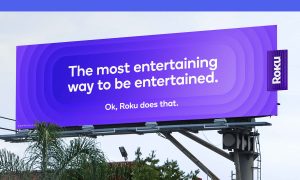
Roku Advertising’s programmatic display platform is an efficient and effective solution for advertisers seeking to reach their desired audiences. The platform provides a comprehensive range of audience targeting options, allowing marketers to identify and capture a highly customized selection of viewers. In addition, by leveraging advanced audience segmentation capabilities, such as viewing behavior and purchase history, advertisers can ensure that their ads appear in front of the most relevant viewers, resulting in highly relevant campaigns tailored to their objectives.
For example, consider a travel company looking to promote its services. The company can go beyond simply targeting by geographic location or basic demographic data using Roku Advertising’s programmatic display platform. Instead, they can use advanced targeting features to reach potential customers most likely interested in their services. Additionally, the platform’s automated buying and optimization capabilities streamline the process for advertisers, enabling them to quickly set up campaigns and monitor performance metrics to refine their strategies.
In summary, Roku Advertising’s programmatic display platform is valuable for advertisers seeking to optimize their digital campaigns. The platform enables advertisers to deploy targeted campaigns efficiently while optimizing performance by providing powerful tools for audience segmentation and automated buying. This results in improved return on investment and a greater likelihood of success for advertisers across industries.
15. StackAdapt

Stack Adapt is a leading programmatic display platform that provides practical solutions for businesses of all sizes. Their unique approach to the ad-buying process allows them to quickly identify and target their ideal customers using precise performance metrics. Through their detailed analytics, they can track progress in real-time and optimize campaigns as needed.
One example of how Stack Adapt has been used is by consumer packaged goods company Unilever. Stack Adapt enabled Unilever to quickly create campaigns tailored to specific users, resulting in an impressive 400% increase in ROI over other methods. In addition, stack Adapt successfully reached its target market by selecting the right audiences based on their data-driven insights, resulting in a high conversion rate.
Many other companies, such as Adidas and Honda, have also used Stack Adapt. By leveraging the power of programmatic advertising, these companies were able to improve their ROI and reach their target customers more efficiently. Stack Adapt is an invaluable tool for businesses looking to take advantage of digital marketing solutions that provide better results at a lower cost. With its powerful tools and detailed analytics, it’s’ no wonder why so many businesses are turning to Stack Adapt for effective display advertising campaigns.
16. PubMatic
![]()
Pubmatic is a programmatic display platform that helps publishers monetize their digital inventory. In addition, their platform enables buyers to access efficient and effective media buying through real-time bidding, advanced targeting capabilities, and cutting-edge analytics.
Since opening its doors in 2006, Pubmatic has worked with many companies in the past, such as Expedia, Microsoft Advertising, and Volkswagen Group of America. They helped these companies develop strategies to reach their target audiences better using programmatic advertising. By utilizing Pubmatic’s’ technology, Expedia was able to increase its ROI by over 20%. Meanwhile, Volkswagen achieved an increase of 12% in ad click rate by targeting specific segments of users more effectively. Lastly, Microsoft Advertising experienced a 7% reduction in total cost per acquisition with Pubmatic.
Pubmatic is an excellent resource for publishers seeking to maximize their digital advertising efforts. Through its programmatic display platform, the company provided access to high-quality inventory and advanced targeting capabilities that can help companies reach the right audiences at the right time. With these tools in hand, companies like Expedia, Microsoft Advertising, and Volkswagen have achieved impressive ROI and ad click rate results. By partnering with Pubmatic, publishers can significantly improve their monetization strategy and increase revenue from digital advertising.
17. War Room
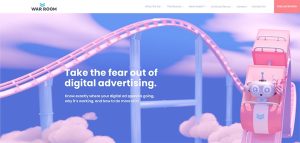
War Room is a programmatic display advertising platform providing companies with an automated, cost-effective solution to reach their target audiences. Through advanced technology and artificial intelligence, War Room helps advertisers deliver precisely targeted digital display ads tailored to each user’s interests. In addition, with its extensive network of publishers, War Room simplifies creating, managing, and optimizing online campaigns across multiple devices and platforms.
War Room has become a go-to provider for highly customized display advertising solutions for some of the world’s biggest brands. With a client list that includes the likes of Coca-Cola, Chevrolet, and HP, War Room has proven its ability to develop tailored solutions that meet the specific needs of its clients.
One such example is Microsoft’s successful launch of its Windows 10 operating system in 2015, which relied heavily on War Room’s programmatic capabilities. With sophisticated targeting and optimization technology at their disposal, War Room was able to develop personalized campaigns that effectively drove awareness for Windows 10. By leveraging these advanced capabilities, Microsoft was able to reach its target audience with laser-like precision, resulting in a successful launch and a satisfied client.
In addition to its impressive list of clients, War Room is also known for providing advertisers with exceptional customer service and support. The team at War Room prides itself on staying ahead of industry trends, always keeping abreast of any updates or changes in programmatic display techniques to ensure that its customers always get the best results possible. This commitment to excellence has made War Room a leader in the digital advertising space, delivering cutting-edge solutions tailored to each client’s unique needs.
18. SmartyAds
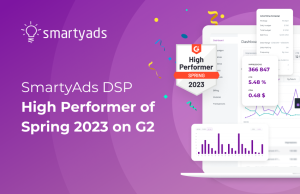
SmartyAds’ programmatic display platform offers a comprehensive range of features unique to the company. Its trademark software, Smarty DSP (Demand-Side Platform), enables advertisers and publishers to buy, sell, and manage digital advertising campaigns in real-time and non-real-time environments. In addition, the platform provides various optimization techniques to maximize campaign performance. It also has an intuitive user interface that makes it easy to use while offering advanced capabilities that make it ideal for small and large businesses.
First of all, SmartyAds offers real-time analytics and reporting tools to help measure the success of campaigns. They also provide custom targeting options, including geographic, demographical, behavioral, contextual, etc. This allows you to target specific audiences with customized ads. Finally, they offer multiple payment options, including CPC, CPM, and CPV, that enable you to pay only for the results achieved.
Moreover, SmartyAds programmatic display platform is an efficient and effective solution for businesses looking to maximize their digital advertising efforts. It offers comprehensive features, advanced optimization techniques, an intuitive user interface, real-time analytics and reporting, and custom targeting options to ensure successful campaigns. With Smarty DSP, you can be sure of getting maximum ROI from your online ad spend. Therefore, it is an ideal platform for advertisers and publishers looking to optimize the results of their campaigns.
In conclusion, SmartyAds’ programmatic display platform offers all the necessary tools and features, making it an excellent choice for businesses looking to maximize their digital advertising efforts. It provides powerful optimization techniques, an intuitive user interface, and numerous custom targeting options within its trademark software Smarty DSP. In addition, with real-time analytics and reporting, you can easily measure your campaigns’ success. SmartyAds is undoubtedly an excellent option for businesses who want to get maximum ROI from their online ad spend.
Is Programmatic Display Advertising Right For You?
Programmatic display advertising platforms allow businesses to reach their target audience with precision, scale, and efficiency. By leveraging the power of data-driven insights and real-time bidding, businesses can optimize their advertising campaigns for better results and ROI. With so many programmatic display advertising platforms available in the market, it can be challenging for businesses to choose the right one for their needs. However, considering the 18 platforms highlighted in this article, companies can narrow their options and make informed decisions based on their advertising objectives, budget, and industry. Here are some questions to think about when selecting the right programmatic display agency:
- What are the targeting capabilities of the programmatic platform?
- How does the platform optimize campaigns and adjust ad placements based on performance?
- What is the platform’s level of transparency regarding pricing and ad placements?
- Does the platform provide access to quality inventory and ad formats that align with your campaign objectives?
- How does the programmatic advertising platform handle fraud detection and brand safety?
- Does the platform integrate with other marketing channels, such as social media and email marketing?
Remember that each programmatic advertising platform has unique strengths and weaknesses; what works for one business may not work for another. Therefore, testing and experimenting with different platforms is essential to find the right fit for your business. Whether you are a small business owner or a marketing manager at a large corporation, programmatic display advertising platforms can help you achieve your advertising goals. So, explore the options today and take your digital advertising game to the next level!
Get Your Campaigns Done Right The First Time With Propellant Media
In Atlanta, GA, and Charlotte, NC, Propellant Media is a full-service digital marketing agency specializing in programmatic display and video advertising. Propellant Media uses advanced data analysis tools to identify the most relevant audiences for their clients and create custom advertising campaigns tailored to their needs.

Our programmatic display service offerings include the following:
- Programmatic Display Advertising: This includes creating and managing display ad campaigns across various channels, including websites, mobile apps, and social media platforms. Propellant Media uses real-time bidding (RTB) technology to ensure that ads are displayed to the right people at the right time.
- Programmatic Video Advertising: Propellant Media’s programmatic viMedia’sertising services include creating and managing video ad campaigns across platforms such as YouTube, Hulu, and more. They use sophisticated targeting techniques to ensure video ads are shown to the right audience.
- Programmatic Audio Advertising: This includes creating and managing audio ad campaigns on platforms such as Spotify, Pandora, and more. Propellant Media uses advanced targeting techniques to ensure that audio ads are delivered to the right audience based on their listening habits.
- Programmatic Connected TV Advertising: Propellant Media’s programmatic advertising services include creating and managing ad campaigns on streaming platforms such as Roku, Apple TV, and more. They use advanced targeting techniques to ensure that ads are displayed to the right audience based on their viewing habits.
To sum it up, Propellant Media’s goal is to help clients achieve their programmatic marketing goals by reaching their target audience more effectively and efficiently. By leveraging data and automation, our experts can create highly targeted campaigns that deliver better results than traditional advertising.
Interested in working with Propellant Media’s team of programmatic, PPC, Geofencing, and Facebook Ads experts? Book a demo or email us at hello@propellant.media.
